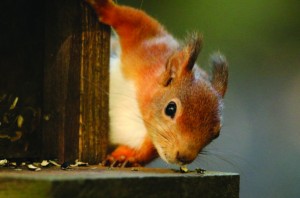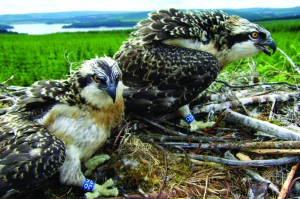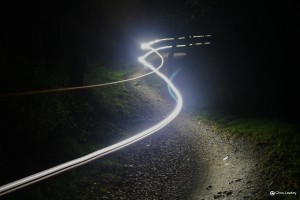There are some days at work that you know you will remember for the rest of your life. Since I’ve started working at Kielder, I’ve already had a few…
Mid-June saw the return of a much-loved mammal back into Kielder Water & Forest Park – the water vole!
So why is the project called Restoring Ratty? Probably the most well-known water vole can be found in the classic children’s book ‘The Wind in the Willows’ –‘Ratty’, that charismatic and kind gentleman who lives on the river bank. Sadly, the water vole has been lost from 97% of its original British range in the past 30 years, mainly through predation by the introduced American mink. Although water voles were historically present within Kielder Water & Forest Park, water voles have not been seen in the area for at least 20 years.
 Bringing the water vole back to Kielder has been a long process, with much work taking place in the preceding years by my colleagues at Northumberland Wildlife Trust and our partners in the Forestry Commission and Tyne Rivers Trust, along with other individuals and organisations. To make sure that they are returning to a safe habitat, volunteers have been checking mink rafts in strategic locations around the forest to ensure that mink can no longer be found here. The Forestry Commission has done much to improve water vole habitat, leaving open areas next to water courses after felling which means banksides have more light, allowing a greater range of plants to grow.
Bringing the water vole back to Kielder has been a long process, with much work taking place in the preceding years by my colleagues at Northumberland Wildlife Trust and our partners in the Forestry Commission and Tyne Rivers Trust, along with other individuals and organisations. To make sure that they are returning to a safe habitat, volunteers have been checking mink rafts in strategic locations around the forest to ensure that mink can no longer be found here. The Forestry Commission has done much to improve water vole habitat, leaving open areas next to water courses after felling which means banksides have more light, allowing a greater range of plants to grow.
With thousands of checks confirming that there are no mink in Kielder, and much work on habitat improvement, we have every confidence that the conditions are right for the voles to thrive.
The first step of the project was to find water voles to use as breeding stock for our reintroduction programme. Individuals have been taken from stable populations in Scotland and the North Pennines (so that they are genetically similar to the water voles that were here in years gone by). The voles then travelled to Devon to spend time with Derek Gow and his team who are experts in water vole captive breeding techniques.
I joined the Restoring Ratty team of staff and volunteers to release the last few individuals out into the wild. During the previous week, over 300 water voles had been returned to various locations in Kielder. Walking along the meandering burns with some of our dedicated volunteers, it was the most wonderful thing to see the wide smiles on their faces as they released these much-loved animals back into the wild. All of their hard work and dedication over the previous years had finally paid off!
In the afternoon, we took the children from Kielder First School up to the release site and what a delight to see their excitement and hear the many ‘oohs’ and ‘awwwwwwws’. These children must be some of the most well-versed in conservation in England as they get to be involved in so many different projects taking place in the Park! I’m sure the sight of water voles swimming away from us across the pond is something they’ll remember forever – it’s certainly something that will stay with me.
If you want to spot them for yourself, the best chance currently is to visit the wildlife hide on the forest drive which is accessed from Kielder Castle – there is a small fee payable for going up in your car. An alternative is to walk up the track and leave your car behind, which is about 1.5miles each way. Further introductions will be taking place over the lifetime of the project, with the next release scheduled for August.
None of this would be possible without funding from the Heritage Lottery Fund, so a huge thank you to them (and to you if you buy a lottery ticket!).
If you want to keep up with the progress of the water voles, visit the ‘Restoring Ratty’ website www.nwt.org.uk/restoringratty and the ‘Restoring Ratty’ Facebook page for updates, photos and a video of the first release.












